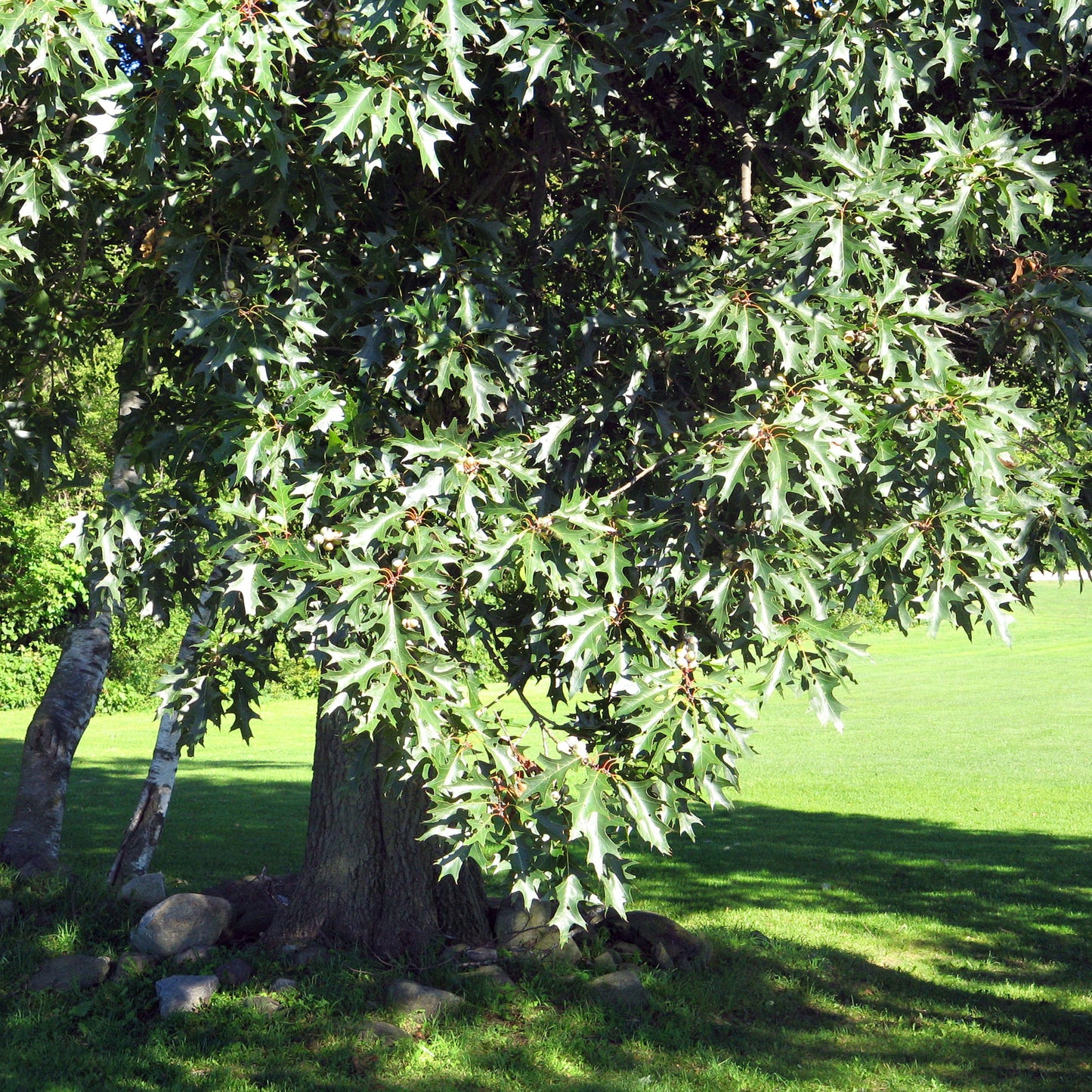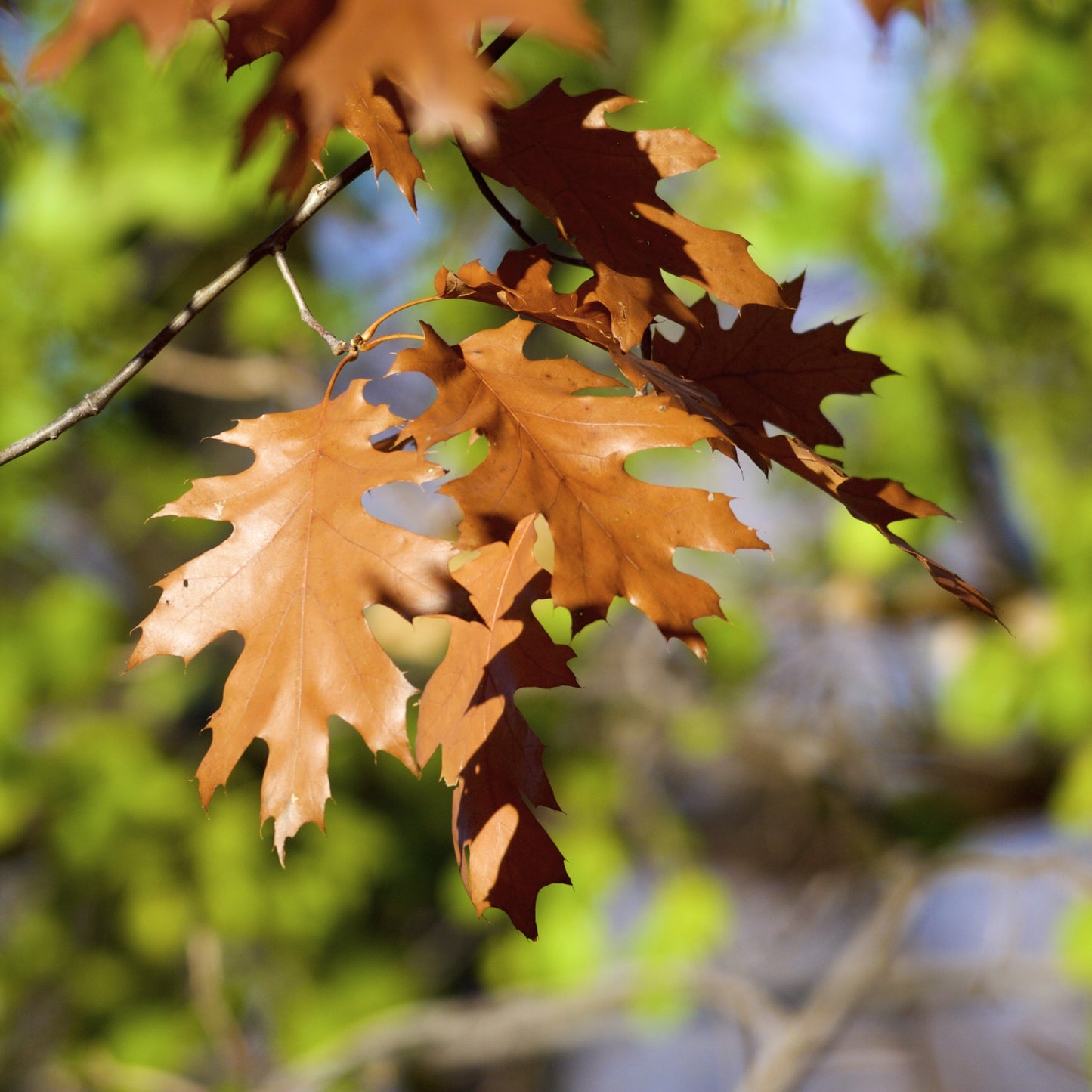Limited Quantities - Reserve Now For Fall
Black Oak Tree
Black Oak Tree
Couldn't load pickup availability
Black Oak Tree
The Black Oak Tree is a stately native hardwood species known for its deeply furrowed dark bark, rich fall foliage, and ecological importance. Found throughout the eastern and central U.S., this tree offers towering beauty, valuable wildlife habitat, and excellent shade.
Ideal for restoration sites, native woodlands, or large landscape settings, the Black Oak is a long-lived species that contributes significantly to forest biodiversity and carbon storage while offering striking visual interest in every season.
Black Oak Tree Overview
| Attribute | Details |
|---|---|
| 🌿 Botanical Name | Quercus velutina |
| 🏷️ Common Names | Black Oak, Yellowbark Oak |
| 🌳 Mature Height | 50–80 feet |
| 🌐 Mature Width | 40–60 feet |
| 📈 Growth Rate | Moderate (12–24 inches per year) |
| ⏳ Lifespan | 100–200+ years |
| 🧊 USDA Zones | 3–9 |
| ☀️ Sun Preference | Full sun (required for strong structure and acorn production) |
| 🧱 Soil Type | Well-drained loam, sandy, or clay soils |
| ⚖️ Soil pH | Slightly acidic to neutral (5.5–7.0) |
| 💧 Water Needs | Low to moderate; drought-tolerant once established |
| 🍂 Foliage Color | Glossy green in summer; red, orange, or yellow in fall |
| 🌰 Fruit Type | Acorns, produced every 2–3 years; important for wildlife |
| 🐝 Pollination | Wind-pollinated; supports a wide range of native insects |
| 🌿 Growth Habit | Upright with broad, rounded crown |
| ↔️ Spacing | 40–60 ft for mature canopy development |
| 🏡 Landscape Uses | Native restoration, shade tree, wildlife plantings, legacy landscapes |
| 🧹 Maintenance Level | Low |
Environmental Benefits
🌰 Produces nutrient-rich acorns for deer, turkeys, squirrels, and birds
🌳 Supports hundreds of native insect and pollinator species
🌎 Contributes to long-term carbon storage and erosion control
🍁 Provides cooling summer shade and brilliant fall foliage display
Pros & Cons
| ✅ Pros | ⚠️ Cons |
|---|---|
| 🌿 Deep roots and strong wood make it wind-resistant | 🌰 Acorns may require cleanup in high-traffic areas |
| 🌞 Excellent canopy for shade and wildlife | 🌳 Not ideal for small urban yards due to large size |
| 🐦 Supports extensive biodiversity and native wildlife | ✂️ Slow to moderate growth may require patience |
| 🧬 Long-lived and suitable for legacy plantings | 💧 Needs occasional deep watering in extreme drought |
| 🍁 Stunning fall color and strong seasonal presence | 🪵 Difficult to transplant once mature |
Planting & Care Guide
🛁 Water thoroughly after planting and maintain moisture through the first growing season
🕳️ Dig a wide hole at least twice the width of the root mass; plant at soil level
🌾 Apply 2–3 inches of mulch around the base, keeping away from the trunk
💦 Water weekly during dry spells in the first 2–3 years
✂️ Prune only to remove damaged branches; minimal shaping needed
🧪 Fertilize only if soil is poor; prefers undisturbed native soil conditions
The Black Oak Tree is a majestic native species that offers timeless beauty, unmatched ecological value, and long-lasting legacy for large landscapes, naturalized areas, and forested properties. Whether you're rewilding your land or anchoring a habitat-rich backyard grove, this classic American oak is a powerful choice for generations to come.
Share




